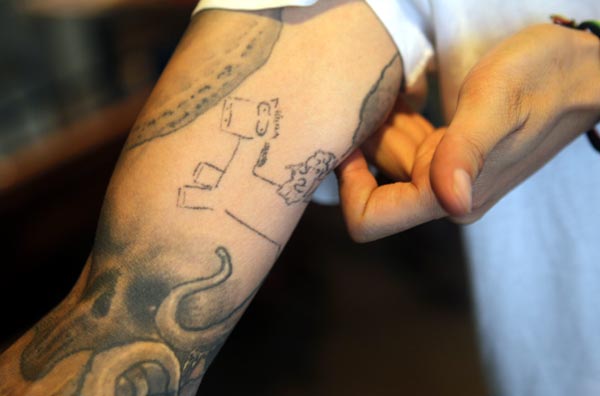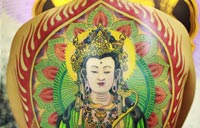 |
| Tattooist Dong Dong's artistic designs. Photos by Zou Hong / China Daily |
The most eminent bigwig to take on tattoos during this period was Yue Fei. He defended the Southern Song against invaders from northern China. And his tattoo is nearly as celebrated as he is.
The nonfiction Biography of Yue Fei claims he tore open his shirt to reveal the tattoo in court after chancellor Qin Hui arrested him for treason. The court accepted the vow inscribed on his hide as proof of innocence.
Steles created by ancient Chinese Kaifang Jews in 1489, 1512 and 1663 reference Yue's tattoo.
The largely fictionalized Shuo Yue Quanzhuan (The Life of Yue Fei) says the warrior's mother used an embroidery needle, vinegar and ink to etch jingzhong baoguo, or "serve the nation with utmost loyalty", on his back at age 15 after he refused to join traitors. She etched the vow on his flesh because she worried his spirit might become less virtuous after her death.
The Ming Dynasty (1368-1644) novel The Story of King Yue Who Restored the Song Dynasty claims Yue flashed the tattoo to fellow villagers, who proposed joining criminals in the mountains when the Jurchen forces invaded.
Yue's legacy inspired many to view tattoos as heroic, rather than villainous. People began declaring their pledges on their skin.



